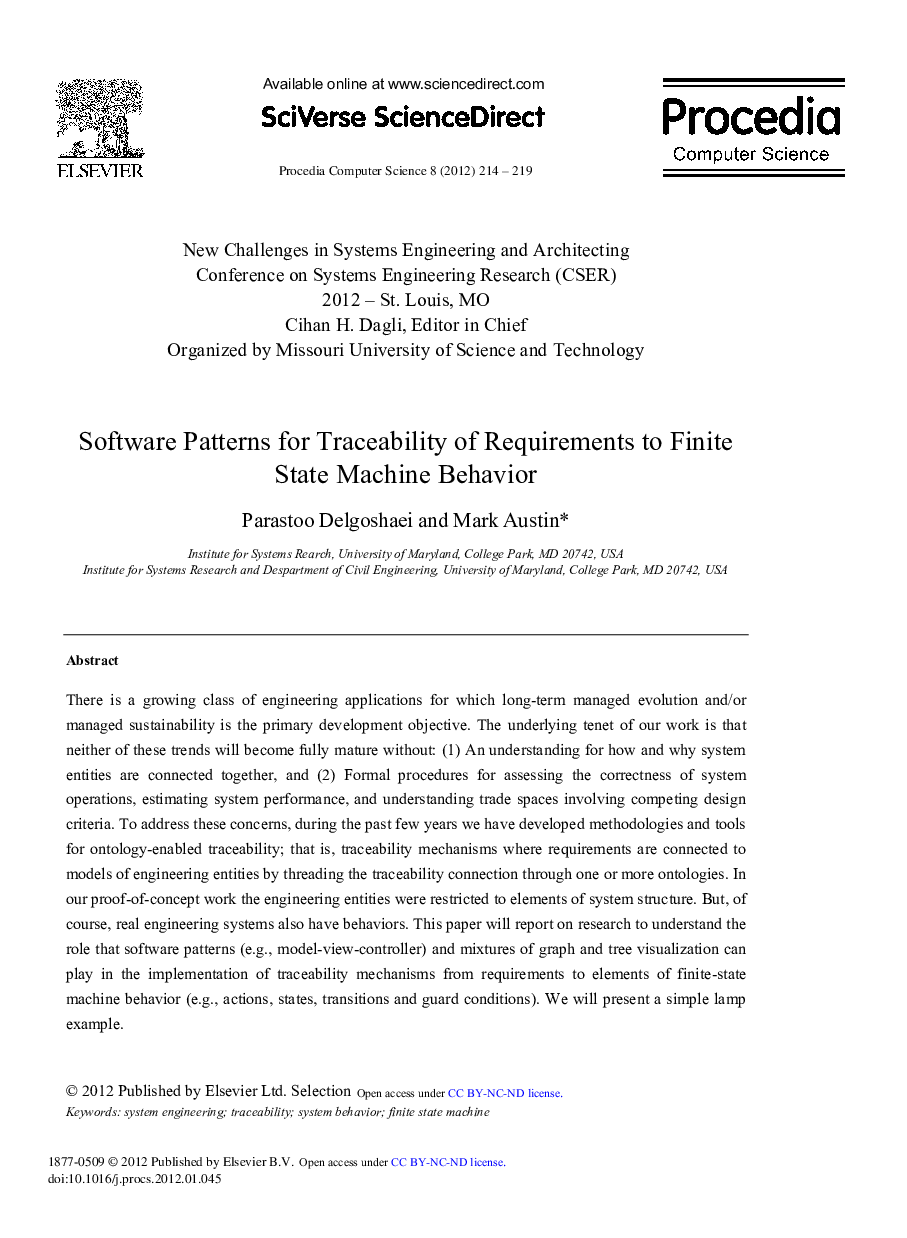| Article ID | Journal | Published Year | Pages | File Type |
|---|---|---|---|---|
| 488085 | Procedia Computer Science | 2012 | 6 Pages |
There is a growing class of engineering applications for which long-term managed evolution and/or managed sustainability is the primary development objective. The underlying tenet of our work is that neither of these trends will become fully mature without: (1) An understanding for how and why system entities are connected together, and (2) Formal procedures for assessing the correctness of system operations, estimating system performance, and understanding trade spaces involving competing design criteria. To address these concerns, during the past few years we have developed methodologies and tools for ontology-enabled traceability; that is, traceability mechanisms where requirements are connected to models of engineering entities by threading the traceability connection through one or more ontologies. In our proof-of-concept work the engineering entities were restricted to elements of system structure. But, of course, real engineering systems also have behaviors. This paper will report on research to understand the role that software patterns (e.g., model-view-controller) and mixtures of graph and tree visualization can play in the implementation of traceability mechanisms from requirements to elements of finite-state machine behavior (e.g., actions, states, transitions and guard conditions). We will present a simple lamp example.
